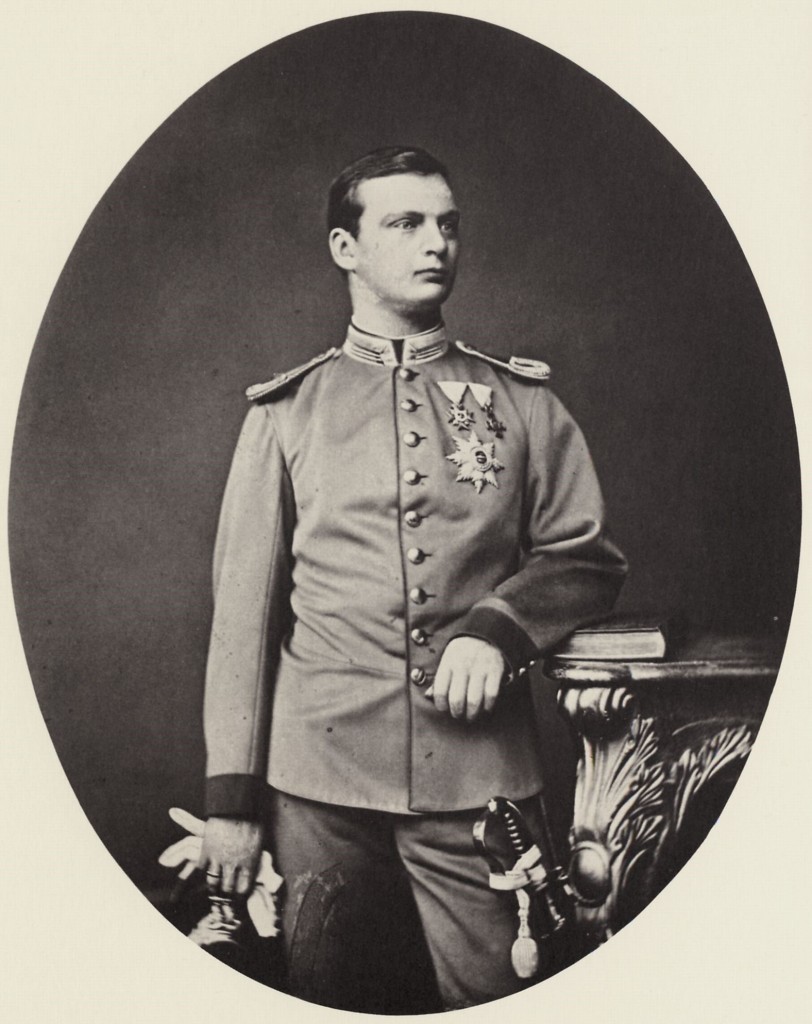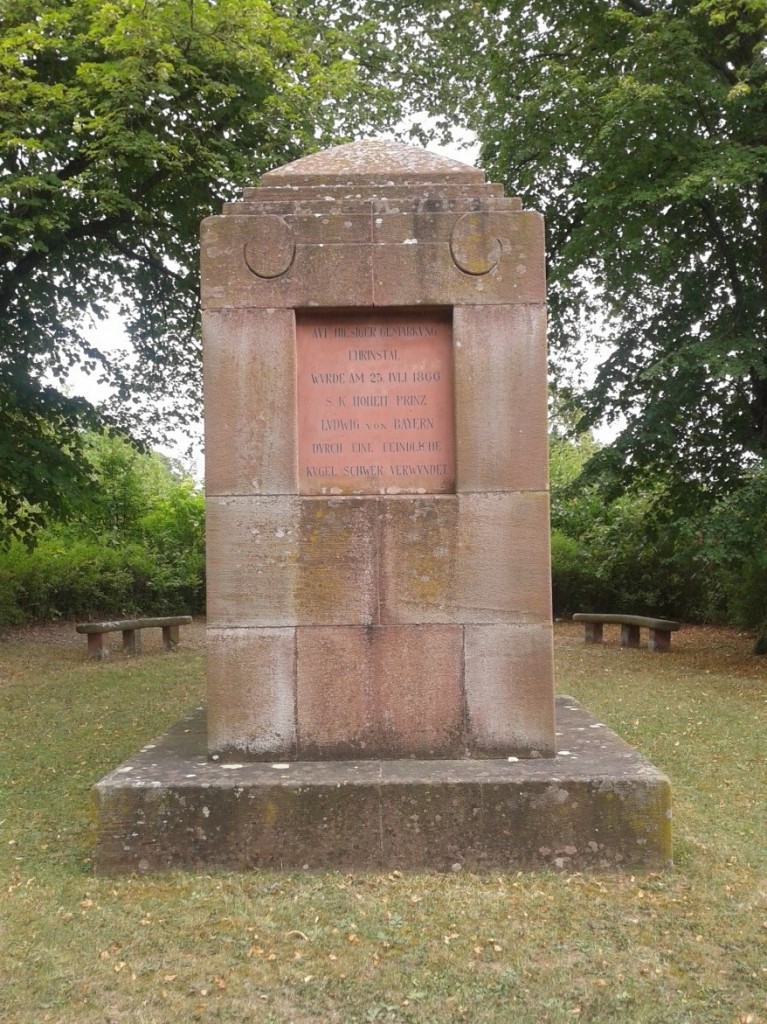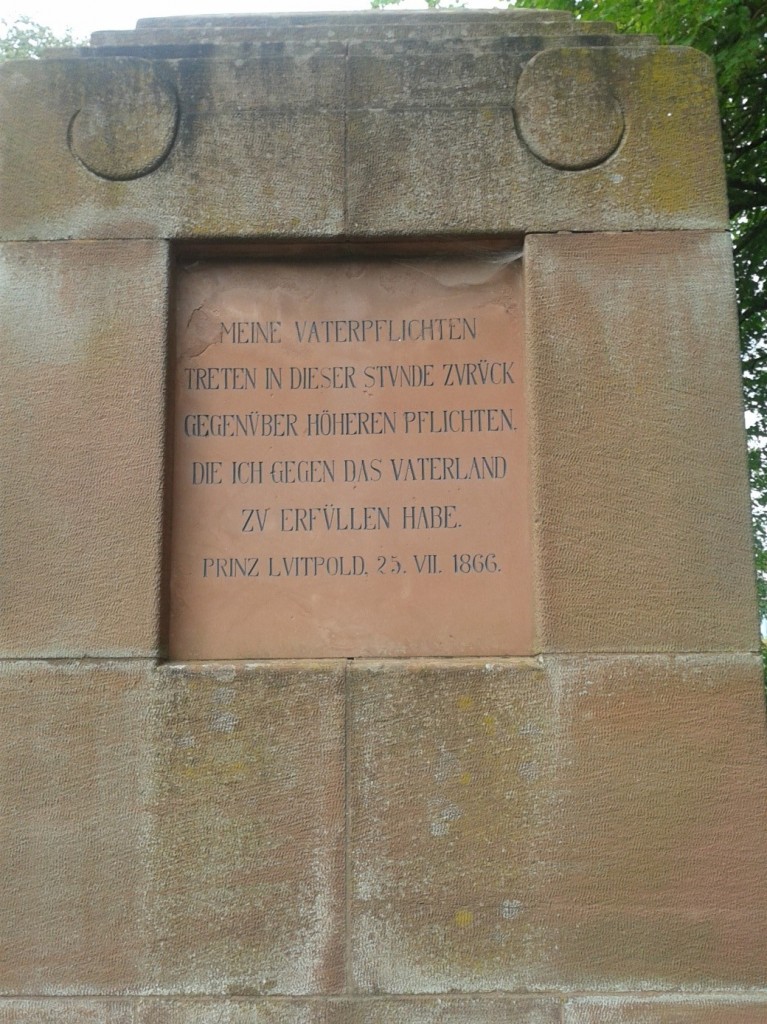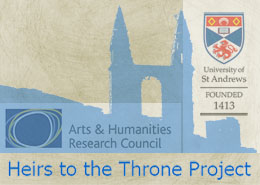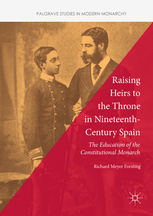see also: Prince Ludwig of Bavaria as a Reichsfeind
Ludwig of Bavaria and Helmstadt: The Heroic Memory of an Unmilitary Prince
Frank Lorenz Müller
3 October 1909 was a big day for the small village of Helmstadt in Lower Franconia. Nothing very exciting had happened there for more than 40 years, but now an event of such magnitude was about to take place, that the Senior Postal Director from the nearby regional capital of Würzburg promised the villagers that he would deploy all the available post office motorcars to cope with the additional traffic on the day and would also reinforce the telegraph and telephone services. The inhabitants of Helmstadt were called upon to decorate their houses and the streets of the village, while Karl Scheller, a Würzburg florist, was contracted to bedeck the school hall, the dining hall of the local hostelry “Zur Krone” and – most important of all – the site of the monument with flowers. For 3 October 1909 was the day when – in the presence of a host of local worthies and, most importantly, of the man himself – Helmstadt’s monument commemorating the wounding of Prince Ludwig of Bavaria on the battlefield would be unveiled. The heroic moment had occurred when the heir to the Bavarian throne was involved in a skirmish with Prussian troops just outside Helmstadt on 25 July 1866 – the last time something exciting had happened there.
The German War of 1866 saw Prussia and her few allies pitted against Austria and the majority of the German states. The main campaign took place in Bohemia, where Prussian armies commanded by Helmuth von Moltke eventually defeated Austria’s northern army and Saxon units at Königgrätz on 3 July 1866. Even after this decisive victory there were some minor engagements in central Germany, though, where Prussian units attacked the forces of Austria’s Bavarian and Württemberg allies. One of these was the skirmish at Helmstadt. Serving as a junior officer within a unit commanded by his father, Prince Luitpold, the young Prince Ludwig of Bavaria was knocked off his horse by a Prussian bullet that hit him in the leg. Having lain on the ground for some time, he was eventually carried to a dressing station. It was only here that the wounded officer was recognised as a royal prince. Even though Ludwig had lost a fair amount of blood and the surgeons failed to remove the bullet that was lodged in his thigh, the prince recovered. The day left him with a lifelong limp, though, and confirmed to this unenthusiastic soldier that the military life was not for him. Not long afterwards the bookish 21-year-old requested to be relieved of his army duties and returned to his university studies.
As was standard practice for princes in nineteenth-century Europe, Prince Ludwig of Bavaria had joined the army at a young age. His branch of the Wittelsbach dynasty displayed a particular aptitude for the military life: his father Luitpold was a dedicated and successful officer. He led the 3rd Bavarian division during the war of 1866, was promoted to inspector-general of the Bavarian army three years later and represented Bavaria at the general headquarters of the German forces during the 1870/71 war with France. Two of Luitpold’s sons continued in their father’s footsteps: Leopold, who commanded troops in combat in 1866 and 1870/1, reached the rank of field marshal in 1905. His younger brother Arnulf, who also fought in these two wars, ended his career as the commanding officer of the I Royal Bavarian army corps occupying the rank of a colonel-general. In the same vein Luitpold’s oldest, Prince Ludwig, was enrolled as a junior lieutenant in the 6th light infantry (Jäger) battalion in 1861 when he was just sixteen years old. After his subsequent transfer to the 2nd infantry regiment he was on active – and highly visible! – guard duty on Munich’s central Marienplatz square. Thereafter Ludwig combined a modicum of soldiering with studying at Munich University and, in 1866, joined the campaign that would lead him to Helmstadt.
That the prince effectively withdrew from any form of active military service after 1866 – he did not even join the war of 1870/71 in any way – did not seriously hamper his advancement through the ranks, though: he was promoted to a colonelcy in 1867, to major-general in 1876 and finally, in 1884, to General der Infanterie. These were obviously nothing more than decorative promotions, for the future king of Bavaria cut a thoroughly un-military figure and pursued this part of his public duties with palpably scant vigour. According to the memoirs of the Bavarian war minister Philipp von Hellingrath, when it came to military matters, all the last king of Bavaria did was “to keep up appearances”. Reporting to Berlin in 1891, the Prussian envoy mentioned that the mayor of Nuremberg had been ill-advised to call Ludwig a great soldier in a recent speech, because “it was generally known how little His Royal Highness is inclined to military matters.” The most famous comment on Ludwig’s civilian proclivities was a widely-noted cartoon published by the Simplicissimus magazine in September 1909. Entitled “Kaisermanöver” it depicted an excessively dashing Kaiser Wilhelm II keenly pointing out the “positions of the enemy troops” to a dishevelled-looking, doddery, over-weight and bespectacled Prince Ludwig, who could not possibly look any more out of place than he does in this military setting. As one would expect from a paper with as strong an anti-militaristic tradition as the Simplicissimus the drawing clearly lampooned the ridiculously over-eager emperor. But for supporters of the Bavarian monarchy the cartoon did not make for comfortable viewing either – especially at a time when military prowess and pride in martial virtues were still widely considered obligatory aspects of successful monarchies.
Ludwig had one ace up his sleeve, though, or rather, a Prussian bullet in his left thigh. Unlike most of his more military-minded, sharp-looking fellow princes, sloppily-turned-out and civilian-minded Ludwig had actually seen front-line action and been wounded in combat. Bavarian patriots made sure that this important heroic detail in the life of their future king was kept alive in people’s minds. 25 years after the war, the Neue Freie Volkszeitung published a chronicle of the Franconian campaign including a moving drawing showing “The Wounding of His Royal Highness Prince Ludwig at Helmstadt, 25 July”. To mark the 30th anniversary of the skirmish the paper put another image of the scene on its front page. When the prince turned 50 in 1895, the Bayerischer Courier printed an image of a heroic battle scene and ten year later it reminded its readers that “Prince Ludwig had also stood on the battlefield at the heart of the fighting together with the sons of the people, at the side of his noble father, the prince-regent.” Those with a patriotic penchant could also buy coloured postcards depicting the scene.
But nowhere did the heart of the story of Prince Ludwig’s near-death for the fatherland beat more strongly than in Helmstadt itself. Ahead of the 25-year anniversary of the war the village had already planned to commemorate the event with a monument, but finances were tight after the recent completion of the village school and so plans were shelved. The local veterans’ association kept up the pressure, though, and in 1905 a committee was finally set up to realise this long-held ambition. After much toing and froing about the best location His Royal Highness, Prince-Regent Luitpold of Bavaria eventually approved the committee’s plans for the monument in May 1909 – after it had been agreed that red sandstone was to be used rather than the cheaper limestone the thrifty Franconians had suggested. The day originally planned for the unveiling – 26 September 1909 – was pushed back by a week so that Prince Ludwig could attend the Munich Oktoberfest before travelling to the northern province of Lower Franconia. Once all of this was settled, frantic last-minute preparations began: various newspapers contacted the local committee, veterans’ associations from across the region offered financial contributions and applied to be represented on the day, catering for 74 VIPs and for the crowds of visitors had to be arranged and a military band from Würzburg was hired to support the local musicians.
The event began with music and “convivial entertainment” (gesellige Unterhaltung) on the eve of the day itself and then unfolded through an incredible succession of festive stages: the reveille at 5:30 a.m., the procession to the site of the monument at 9:00 a.m., the arrival of the prince at 10:00 a.m., words of welcome by the “virgin of honour” Miss Hedwig Wolf, a divine service, musical interludes, various speeches, the unveiling of the monument, a festive luncheon and an open-air concert, a further procession along the road on which Prince Ludwig eventually left Helmstadt at 1:45 p.m. – and then further speeches and eventually a ball in one of the taverns.

The unveiling of the Prince Ludwig monument in Helmstadt, 3 October 1909; Archiv des Marktes Helmstadt; WiKi Commons
The day was a great success. It remained dry, even though the weather was cool and windy. One eye-witness, Josef Baunach, later remembered that the village had never seen as many visitors as on that day. Prince Ludwig appeared to enjoy himself as well. The sixty-four-year-old attended the ceremony – unthinkable for a Prussian prince – wearing not a uniform, but a dark frock coat and bowler hat. As was his style, he gave a long, slightly rambling speech that looked back to the dark days of the fraternal war of 1866, to the inadequate equipment that had cost the Bavarian troops dearly on the day and to the sacrifices the German monarchs had made to form the German Reich. Ludwig regretted the defeat of the noble idea of a greater, more loosely federated großdeutsch Germany that included Austria and expressed his concerns about the situation of the German population in the Austro-Hungarian Empire.
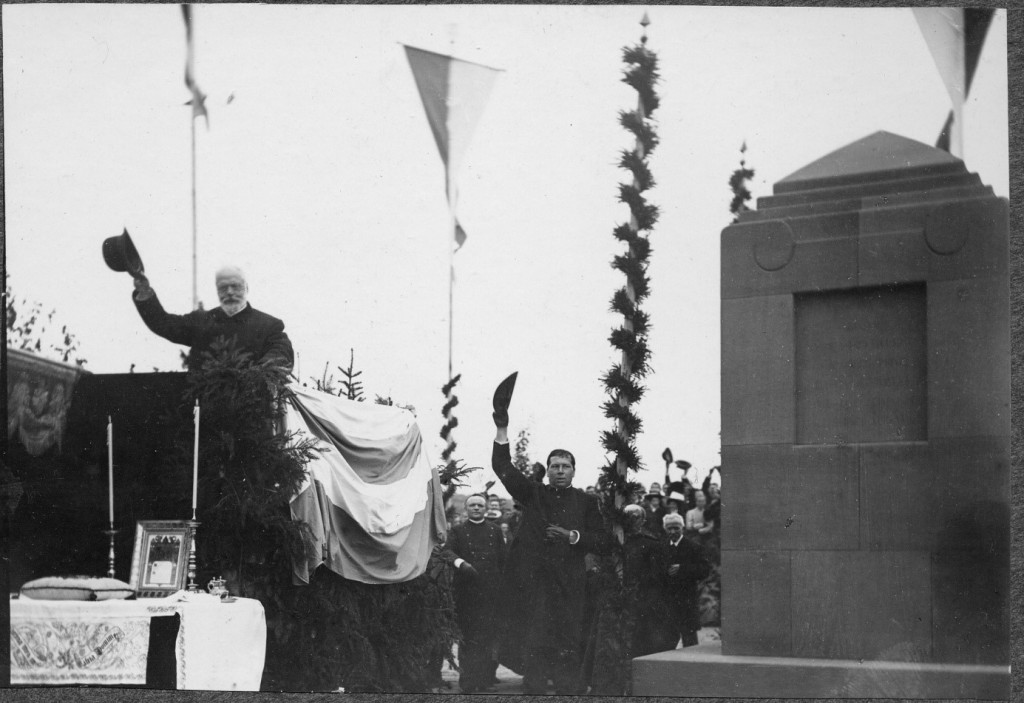
Prince Ludwig – donning a bowler hat and a frock coat – addressing the crowd at Helmstadt, 3 October 1909; Archiv des Marktes Helmstadt; WiKi Commons
As was usual for Prince Ludwig’s political speeches, reactions divided neatly along political lines. The Prussian envoy to Munich, who had described the whole business of the Helmstadt monument as rather superfluous, regretted that – once again – the “angel of tact” had not been present when the speech was prepared. Writing from the Austrian capital, a Saxon diplomat reported a tart comment from a Viennese newspaper: “The example of the German Emperor has shown only too often that it is not always good, when princes speak.” The Catholic Allgemeine Rundschau, on the other hand, called the prince’s address “on the battlefield of Helmstadt” a “master-piece of oratory” and welcomed this “truly national speech on the core question of our internal and external development”.
The monument itself – which adorns a tacked-away corner of Helmstadt to this day – was a fairly squat affair, but it featured a message that tied the un-military Ludwig powerfully into the Wittelsbach dynasty’s military culture. After he had heard that his son had been wounded Prince Luitpold, the senior Bavarian commander in that region in 1866, rode over to seem him. A report of their conversation, filed in the Bavarian war archive, included the following statement made by Luitpold: “At this hour my duties as a father have to give way to higher duties that I have to fulfil towards my fatherland.” These austere words were graven into one of the four stone tablets adorning the monument and thus served to remind all onlookers of the military sacrifice made by both men.
I am grateful to Bernd Schätzlein (Helmstadt) for sending me a wealth of scanned and transcribed documents from the Helmstadt Gemeindearchiv C3240, Karton 2 as well as the manuscript of a paper by Walter Hamm (Gehen und Kommen. Von Prinzregent Luitpold zu König Ludwig III. – Vortrag am 9. Dezember 2012) on which much of this essay is based.

